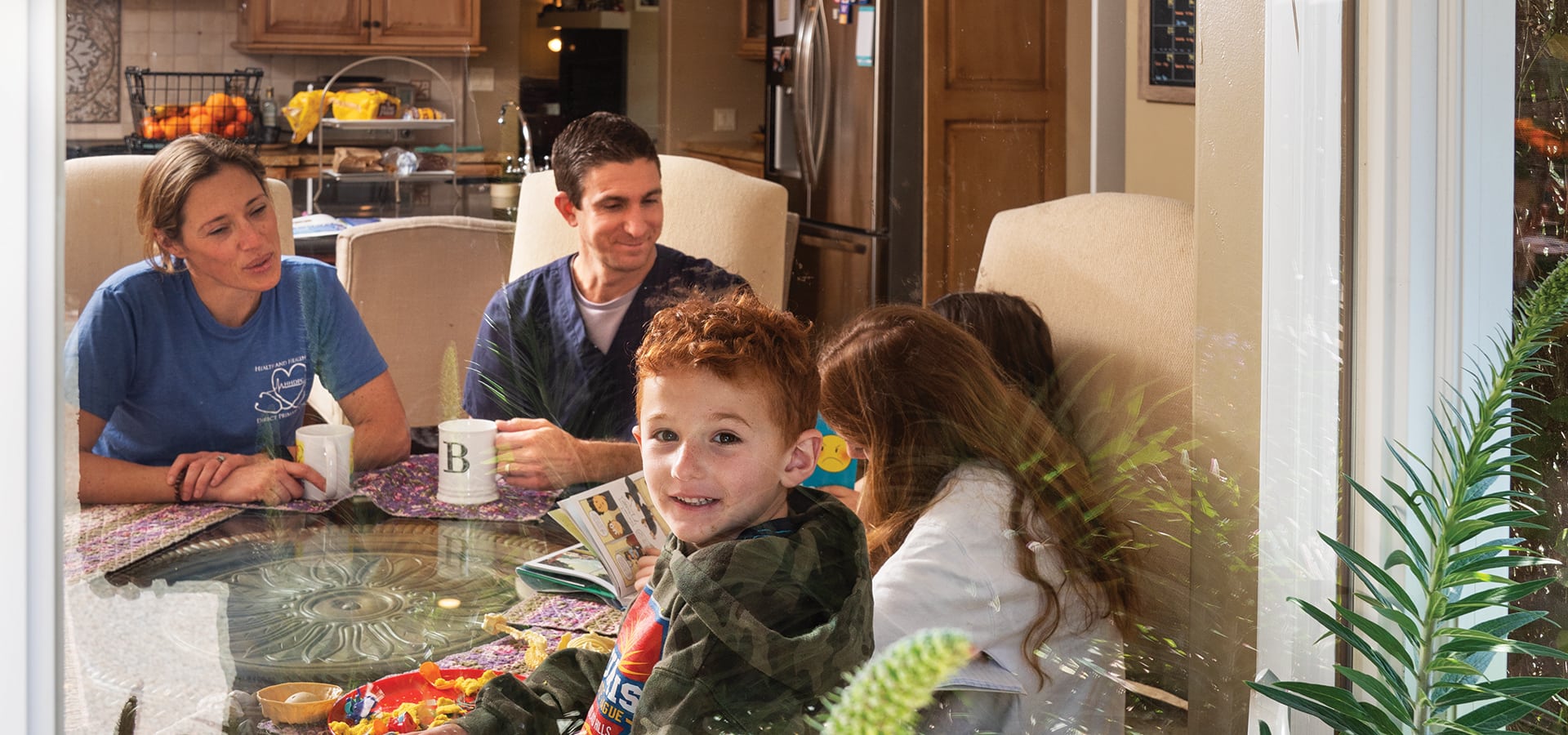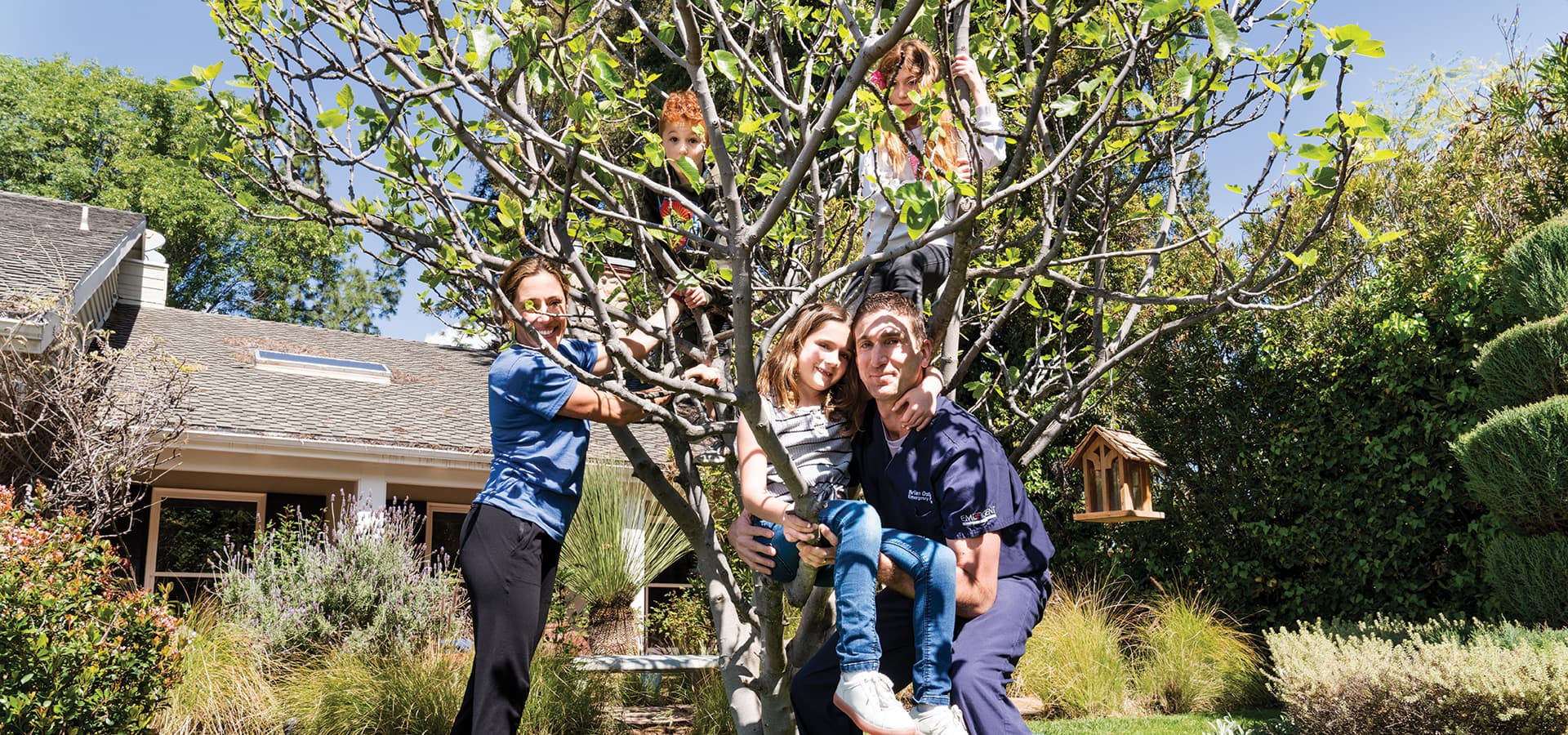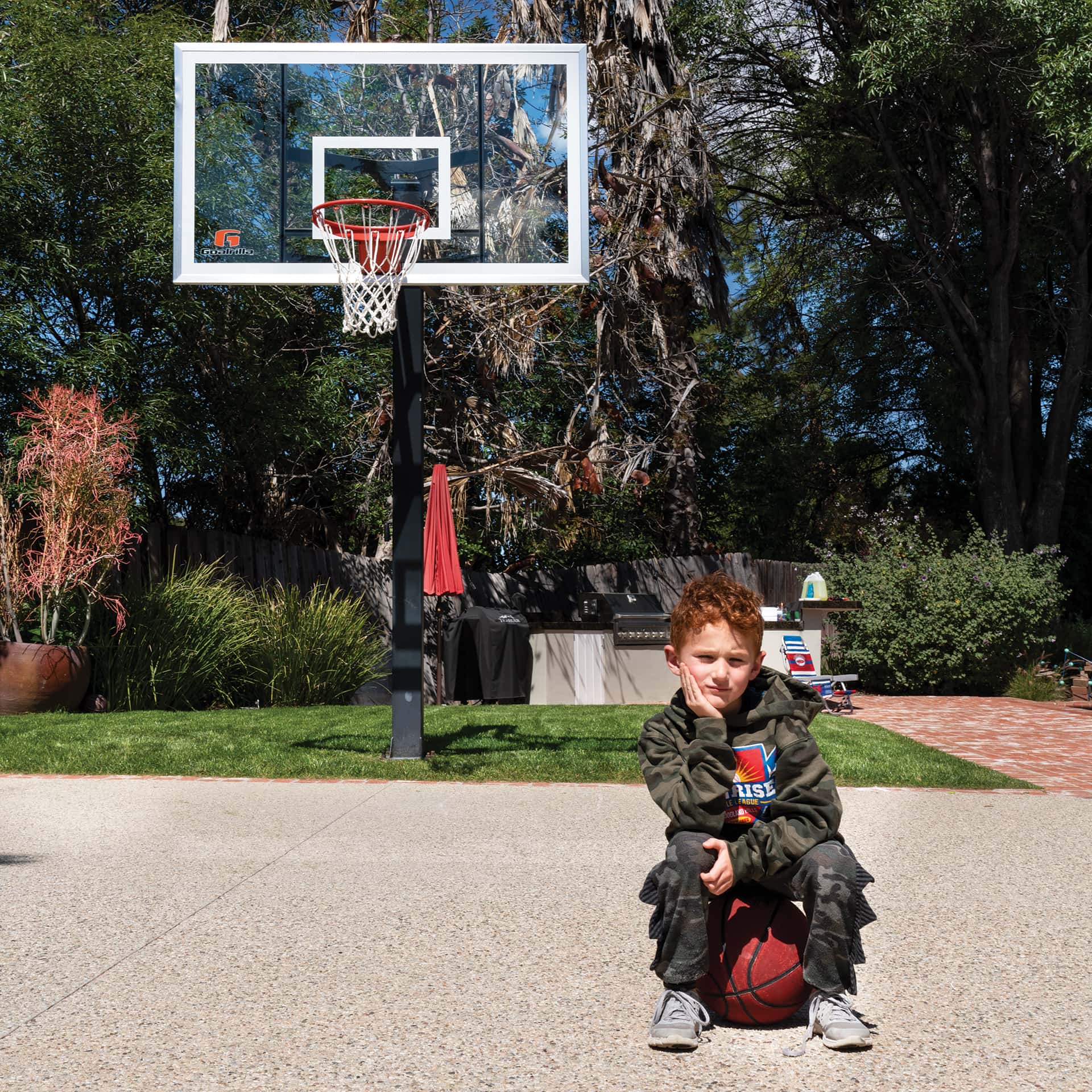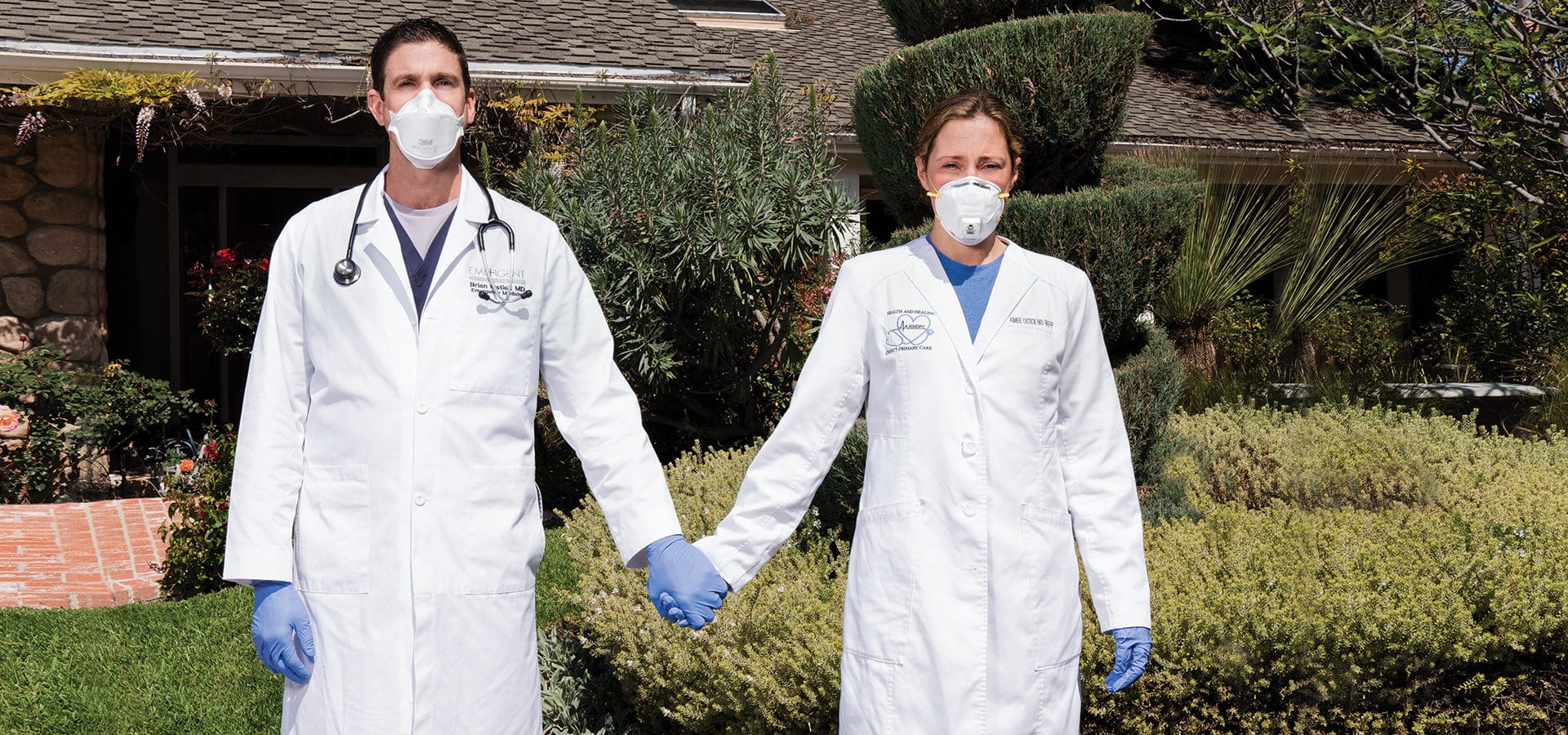Internist Aimee Ostick opened her medical practice in Woodland Hills just seven months ago.
Before the virus hit, it had been growing; 167 people had signed up. In early March, the 38-year-old was monitoring information from the World Health Organization and the Centers for Disease Control, and wasn’t overly concerned. “By nature, Brian [her ER doctor husband] and I aren’t worriers. We try to take evidence-based approaches.” There were few COVID-19 cases domestically at the time. This was all before the massive outbreak in Italy.
She remembers the moment everything changed.
“Brian was working a swing shift at the hospital and was there until late evening. He texted me and said, ‘Can you wait up for me?’ When he arrived home he really needed to debrief and decompress. He had been hit with a lot of worry from hospital administration and the ER group. We had an hour-plus conversation trying to determine what our strategy would be. When school shuts down, what will that look like for us as a couple? What will that mean for me and my practice? If he contracts COVID-19, how should we isolate him and what does all that look like? We went through it as calmly as we could.”
“I went into emergency medicine to treat the sickest patients, people at their most vulnerable. Now is the time to step up and do the work.”
The next day Aimee had a meeting with the principal at St. Mel’s Catholic Church, where the couple’s three children attend school. “She asked me what my thoughts were. I said my husband is not a worrier, but he has this impending sense of doom.”
Forty-eight hours later, all LA schools were shut down and the couple found themselves struggling with childcare. Aimee started doing telemedicine from the family’s Woodland Hills home and her office, giving virtual exams over the phone and communicating by video, text and chat. Wearing her lab coat and gloves, and armed with some of the protective N95 masks she got during the fires this past fall, Aimee began administering swab tests in the office parking lot. At press time, in mid-April, Aimee reported that out of 30 tests she’d administered, three were positive.
Brian has been closer to the virus. On a sunny day in late March, he shared that Valley Presbyterian (where he works) had tested 50 people, with two positive results—although, he added, “We still have a lot of test results pending.” When we asked Brian for an update in mid-April, he declined to reveal the exact number of COVID cases.
The good news is that the swab test results that used to take seven days to get now come in 48 hours. And now, Aimee is administering the new, rapid antibody blood tests for her patients, which can detect whether or not you’ve had the coronavirus in the past and if you’ve developed antibodies. Both Aimee and Brian did the 10- minute test and received negative results.
In addition to treating people who might be infected, the ER staff at Valley Pres also has to deal with everyday emergencies. Much to the relief of the staff, those numbers are down. “This time last year we had around 220 patients a day in the ER. Right now, we’re down to 100 a day.” People, he concurs, just don’t want to go to a hospital ER unless they have to.

THE SPACE BETWEEN US
Brian and Aimee met and fell in love while both were attending medical school at Sydney Kimmel Medical College in Philadelphia. At the time, they figured having their profession in common would be a good thing. Never in their wildest dreams could they have predicted that what drew them together might one day force them apart.
Brian, 39, is chief of staff and the emergency room medical director at Valley Pres. The couple’s three kids, ages 10, 7 and 5, are now doing online coursework at home. Amy’s parents ordinarily help out with childcare, but the family is quarantined from them.
“I never could have imagined we’d be in a situation like this—with Brian and me both at risk—and knowing that we could ultimately have to be apart,” says Aimee. “Having one of us get really sick is my biggest fear at this point.”
Brian, tall and lanky with a warm smile, admits it’s been challenging. He mitigates stress by concentrating on the tasks at hand. “At work, everyone has a job to do. I went into emergency medicine to treat the sickest patients, people at their most vulnerable. Now is the time to step up and do the work.”
It’s often said that during a crisis, people show their true character. People have stolen masks, gloves and sanitizer from the hospital, but Brian counters that with: “We’ve also seen doctors volunteer to pick up extra shifts, and we’ve had nurses who typically work doing routine tests in GI volunteer in the ER. They’re scared, but they show up day after day.”
Because Brian comes in contact with more patients, Aimee is concerned about his getting COVID-19. She takes solace in the fact that her husband is really good at what he does.
“He has a calm demeanor. When there’s a code—someone comes in with cardiac arrest, for example—Brian knows how to delegate and control the scenario. That is the kind of person you need in a high-stress situation,” she explains.

Above:
The Osticks with their children: Siena, 10; Maddie, 7; and Luke, 5.
LIFE UPENDED
Brian’s schedule over the past month has been rigorous. On a typical day, he wakes up at 4:45 a.m., leaves the house at 5:40 a.m., and arrives at the Van Nuys hospital at 6 a.m. He works in the ER until 3 p.m. Then comes an hour-long virtual review to update the physician assistants and nurse practitioners, followed by a COVID-19 planning meeting with hospital officials. He leaves the hospital around 6:30 p.m., arriving home around 7 p.m., before undergoing a meticulous decontamination process. He takes off his shoes and leaves them in the garage, strips off his scrubs, throws them into the washing machine immediately, and takes a shower. He has dinner with the family, and then it’s time to prepare for his 6 a.m. shift the next day.
Aimee owns a primary direct care practice. Instead of the hefty thousand-dollar-plus fees most concierge doctors charge up front, patients pay a nominal fee to sign on, and then $89 a month for personalized, integrative care. Taking care of the kids is a constant juggle. “I’m trying to do as much as I can from home with telemedicine. I can’t use my parents for childcare, and that is my biggest challenge right now. We are getting some help from neighbors, and I have a few babysitters. If this turns into prolonged situation, we’ll have to think of something more permanent.”
The kids are taking it all in stride. “We try to minimize stress and thoughts of Mom and Dad getting sick. We talk more about the preventive steps we can take, focusing on handwashing and social distancing and the reasons why we are doing this,” says Aimee.

A WING AND A PRAYER
Although each passing day brings new challenges, the couple’s biggest concern remains constant: avoiding contamination. “At the hospital we have limited supply of PPE (Personal Protective Equipment), but I do use it when seeing patients. I’m taking every precaution. I am also trying to eat right and exercise to keep myself fit so that I can be my best when at work,” shares Brian.
If Brian contracts the disease, he’ll move into Aimee’s parents’ guesthouse. As for the worst-case scenario, Amy admits that they’re still working on a plan. “If we both get it, we will self-isolate and if our kids are OK, we’ll probably … um … I don’t know where we’ll send them. Some family member who is not high-risk will probably have to take care of our kids.”
In the meantime, the couple says they will continue trying to reduce stress. “We’ve been taking turns going for runs, meditating and talking to other health care professionals. We are both practicing Catholics, and we can’t go to mass right now. But we can pray together—and we do.”
For more from Aimee on the Ostick’s story, go to the SheSez with Linda Grasso podcast at shesez.com/dr-aimee-ostick.
Join the Valley Community









